Instruction
Swing path problems and how to fix them
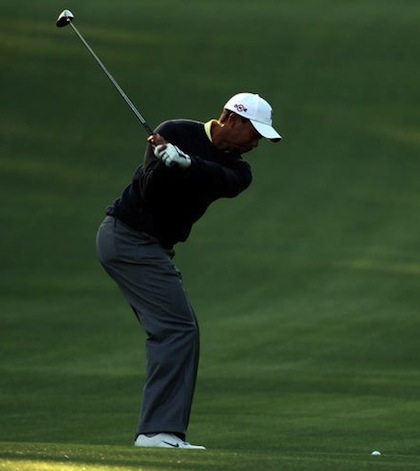
In my previous story, I discussed Tiger Woods’ ongoing struggle with his swing path, which at times is too inside-out.
Because Tiger pushes the needle more than just about any other athlete in the world, many readers took the article as a personal affront to Tiger, and I fear that the message in the article may have been lost. So I want to take the opportunity to discuss the swing path in more detail for readers who may not have understood exactly what I meant.
There are three general directions that a golf club travels through impact:
- Along the base plane line (BPL).
- To the right* of the BPL, which is called in-to-out.
- To the left* of the BPL, which is called out-to-in.
*Note: For left-handed golfers, the directions are reversed.
Only one of these paths, No. 1, is an arc that moves in-to-in. The others are much straighter lines. The term “in-to-in” simply means the golf club is approaching the ball from inside the BPL and arcing back inside the BPL after impact. Is there an ideal swing path, golfers often ask me? That depends on the face angle of the golf club in relation to the path. But the shape of the in-to-in path is preferable because golfers play the game from “inside” the golf ball, or “aside” it if you will.
All golfers fall into swing patterns. I have yet to teach any player who swings the club easily both ways. Once golfers develop a swing, it is what it is until a concerted effort is made to change it. The problem with the in-to-out and out-to-in paths is they are both reliant on a matching face angle (one that is closed or open to that path). Can a golfer play with a swing path that is 6 degrees in-to-out? Sure, if the face is consistently 2 degrees closed to that path. But if the path is more consistently in-to-in, the face can be square to that arc.
Note: I have used the term BPL as opposed to the term “target line” simply because the ONLY time they are one and the same is when golfers set up perfectly parallel left of the target line. Many touring pros play from a slightly open position, meaning that their BPL is somewhat left by design. They do this to offset the “rightness” of their path, especially when hitting down on an iron. Remember that any golf club swung on an inclined plane is swinging right of the BPL when it is swinging DOWN. When a golf club is swinging left of the BPL, it is swinging UP.
Paths that are well right or left cause average golfers nightmares because they cannot match their clubface to the path consistently. So what can golfers do to get on a better path? Well, there are several contributing factors, but one of the things I see is that golfers are under the illusion that the body controls the club.
“Turn the shoulders away in the backswing and the hips through in the downswing” is what I hear from many golf professionals. And this is the desired body motion for most swings. But (and here is the point I was making in the Tiger article) the golf club is swung by the ARMS, which happen to be attached to the shoulders (NOT THE HIPS or any other part of the anatomy).
Yes, the body must get out of the way for the arms to swing, but the ARMS do the swinging. So if a player is suffering from an inside-out path, simply turning the lower body through impact is not sufficient. In fact, what I teach many of my players who are stuck under or have a swing path that is too far inside is to consider turning the UPPER body through. If you watch Tiger’s practice swing, the big difference is that his shoulders open early in the downswing, which allows the club to swing more left. Is this a universal prescription? Of course not. If your path tends to be too much to the left, it may suggest your shoulders are opening TOO early; again different strokes for different folks. The point is that many of my tournament players who get overly focused on rotating through the ball get even more under or inside their desired path.
I am not advocating playing golf with your arms; we all know the value of the body in the swing. I am merely suggesting that the role of the body, in addition to supplying balance, reacting to ground forces, adding power, etc., is to make room for the arms to swing and therefore move the golf club through the golf ball.
My favorite drill is this: If you have been on Flightscope or Trackman and learned that your path is in-to-out or out-to-in and you desire to change it, MOVE THE GOLF BALL DRASTICALLY IN YOUR STANCE. So, if you are seriously in-to-out and struggling with club face or bottom of the swing issues, move the golf ball WAY forward in your stance (like past your left toe). Do this for a week, and you will start to feel your reaction.
Here’s why: When the golf ball is back in your stance, your instincts are to drop your arms and get the golf club down first. When the golf ball is well forward, your instincts are to open your body first and drop the club later. I have used ball position changes to redirect swing paths for years and if you do it long enough, you WILL change. Later you can gradually bring the golf ball back to a more standard position.
Remember this: Do not worry about the results of your shots when doing these drills. You are trying to change a motion, drills can help that. One of my favorite drills for under plane, shallow attack angle players is to hit drivers off the ground from a forward ball position.
One more thing: In my previous story about Tiger, I mentioned getting the club back out in front of you. This involves not only turning the body, but also rotating the arms. If you “drag the handle” or try to “lag” the club, it often stays behind you. Think about that for a bit and you’ll see what I mean.
As always, feel free to send a swing video to my Facebook page and I will do my best to give you my feedback.
Instruction
The Wedge Guy: Beating the yips into submission
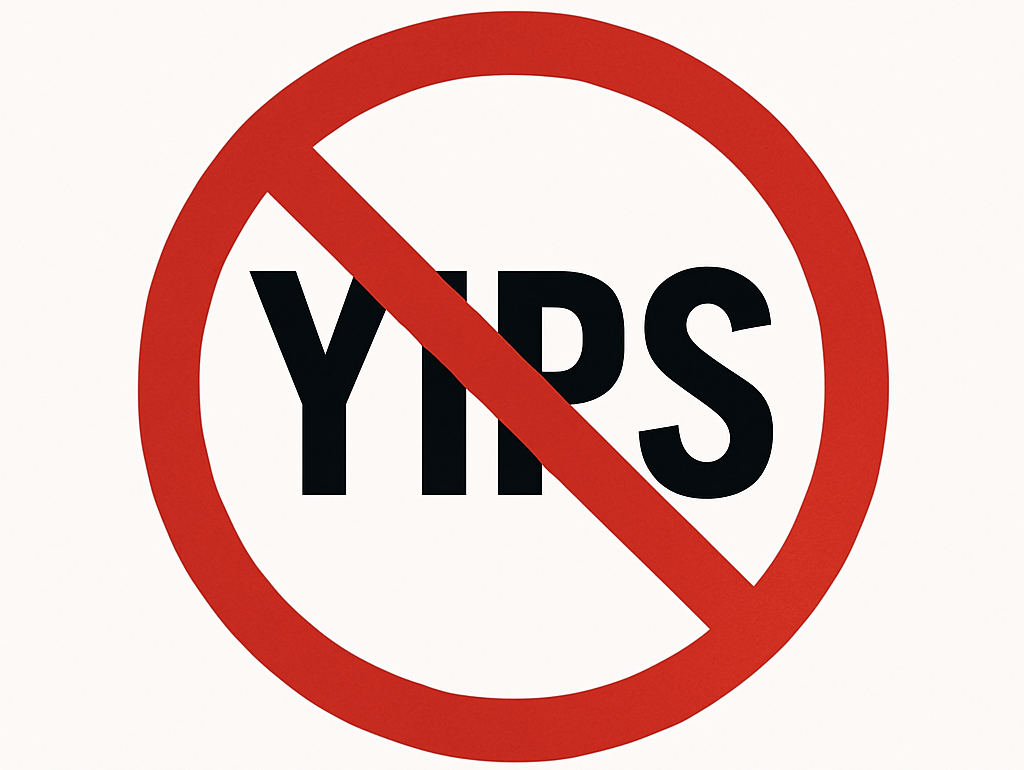
There may be no more painful affliction in golf than the “yips” – those uncontrollable and maddening little nervous twitches that prevent you from making a decent stroke on short putts. If you’ve never had them, consider yourself very fortunate (or possibly just very young). But I can assure you that when your most treacherous and feared golf shot is not the 195 yard approach over water with a quartering headwind…not the extra tight fairway with water left and sand right…not the soft bunker shot to a downhill pin with water on the other side…No, when your most feared shot is the remaining 2- 4-foot putt after hitting a great approach, recovery or lag putt, it makes the game almost painful.
And I’ve been fighting the yips (again) for a while now. It’s a recurring nightmare that has haunted me most of my adult life. I even had the yips when I was in my 20s, but I’ve beat them into submission off and on most of my adult life. But just recently, that nasty virus came to life once again. My lag putting has been very good, but when I get over one of those “you should make this” length putts, the entire nervous system seems to go haywire. I make great practice strokes, and then the most pitiful short-stroke or jab at the ball you can imagine. Sheesh.
But I’m a traditionalist, and do not look toward the long putter, belly putter, cross-hand, claw or other variation as the solution. My approach is to beat those damn yips into submission some other way. Here’s what I’m doing that is working pretty well, and I offer it to all of you who might have a similar affliction on the greens.
When you are over a short putt, forget the practice strokes…you want your natural eye-hand coordination to be unhindered by mechanics. Address your putt and take a good look at the hole, and back to the putter to ensure good alignment. Lighten your right hand grip on the putter and make sure that only the fingertips are in contact with the grip, to prevent you from getting to tight.
Then, take a long, long look at the hole to fill your entire mind and senses with the target. When you bring your head/eyes back to the ball, try to make a smooth, immediate move right into your backstroke — not even a second pause — and then let your hands and putter track right back together right back to where you were looking — the HOLE! Seeing the putter make contact with the ball, preferably even the forward edge of the ball – the side near the hole.
For me, this is working, but I am asking all of you to chime in with your own “home remedies” for the most aggravating and senseless of all golf maladies. It never hurts to have more to fall back on!
Instruction
Looking for a good golf instructor? Use this checklist
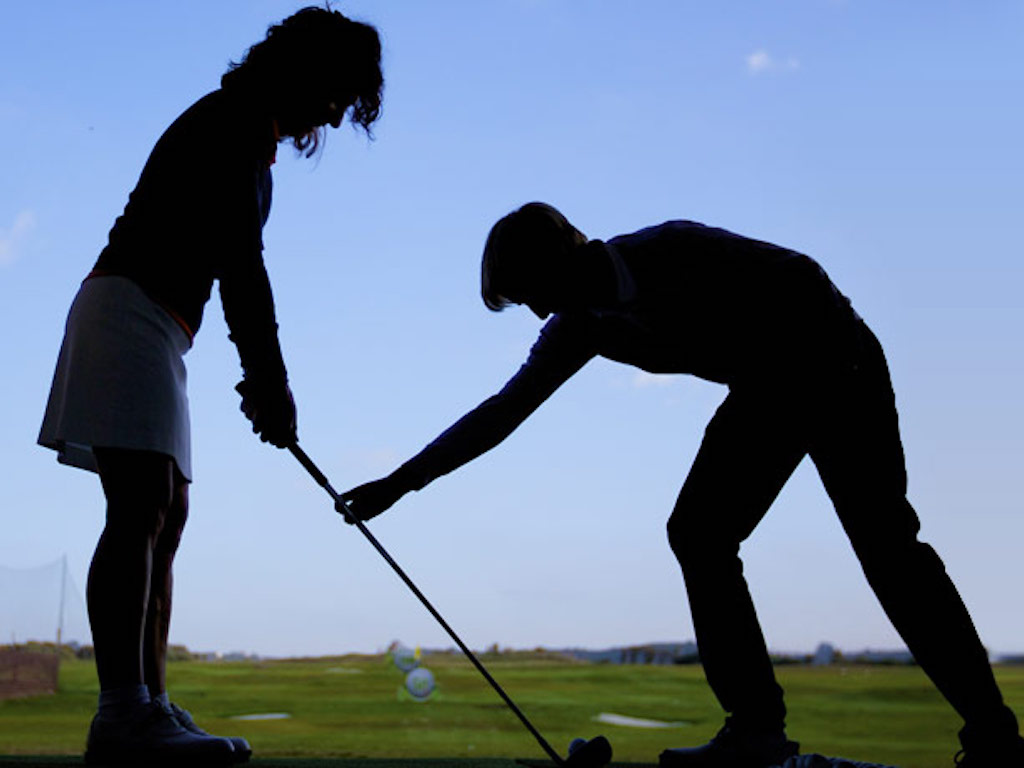
Over the last couple of decades, golf has become much more science-based. We measure swing speed, smash factor, angle of attack, strokes gained, and many other metrics that can really help golfers improve. But I often wonder if the advancement of golf’s “hard” sciences comes at the expense of the “soft” sciences.
Take, for example, golf instruction. Good golf instruction requires understanding swing mechanics and ball flight. But let’s take that as a given for PGA instructors. The other factors that make an instructor effective can be evaluated by social science, rather than launch monitors.
If you are a recreational golfer looking for a golf instructor, here are my top three points to consider.
1. Cultural mindset
What is “cultural mindset? To social scientists, it means whether a culture of genius or a culture of learning exists. In a golf instruction context, that may mean whether the teacher communicates a message that golf ability is something innate (you either have it or you don’t), or whether golf ability is something that can be learned. You want the latter!
It may sound obvious to suggest that you find a golf instructor who thinks you can improve, but my research suggests that it isn’t a given. In a large sample study of golf instructors, I found that when it came to recreational golfers, there was a wide range of belief systems. Some instructors strongly believed recreational golfers could improve through lessons. while others strongly believed they could not. And those beliefs manifested in the instructor’s feedback given to a student and the culture created for players.
2. Coping and self-modeling can beat role-modeling
Swing analysis technology is often preloaded with swings of PGA and LPGA Tour players. The swings of elite players are intended to be used for comparative purposes with golfers taking lessons. What social science tells us is that for novice and non-expert golfers, comparing swings to tour professionals can have the opposite effect of that intended. If you fit into the novice or non-expert category of golfer, you will learn more and be more motivated to change if you see yourself making a ‘better’ swing (self-modeling) or seeing your swing compared to a similar other (a coping model). Stay away from instructors who want to compare your swing with that of a tour player.
3. Learning theory basics
It is not a sexy selling point, but learning is a process, and that process is incremental – particularly for recreational adult players. Social science helps us understand this element of golf instruction. A good instructor will take learning slowly. He or she will give you just about enough information that challenges you, but is still manageable. The artful instructor will take time to decide what that one or two learning points are before jumping in to make full-scale swing changes. If the instructor moves too fast, you will probably leave the lesson with an arm’s length of swing thoughts and not really know which to focus on.
As an instructor, I develop a priority list of changes I want to make in a player’s technique. We then patiently and gradually work through that list. Beware of instructors who give you more than you can chew.
So if you are in the market for golf instruction, I encourage you to look beyond the X’s and O’s to find the right match!
Instruction
What Lottie Woad’s stunning debut win teaches every golfer
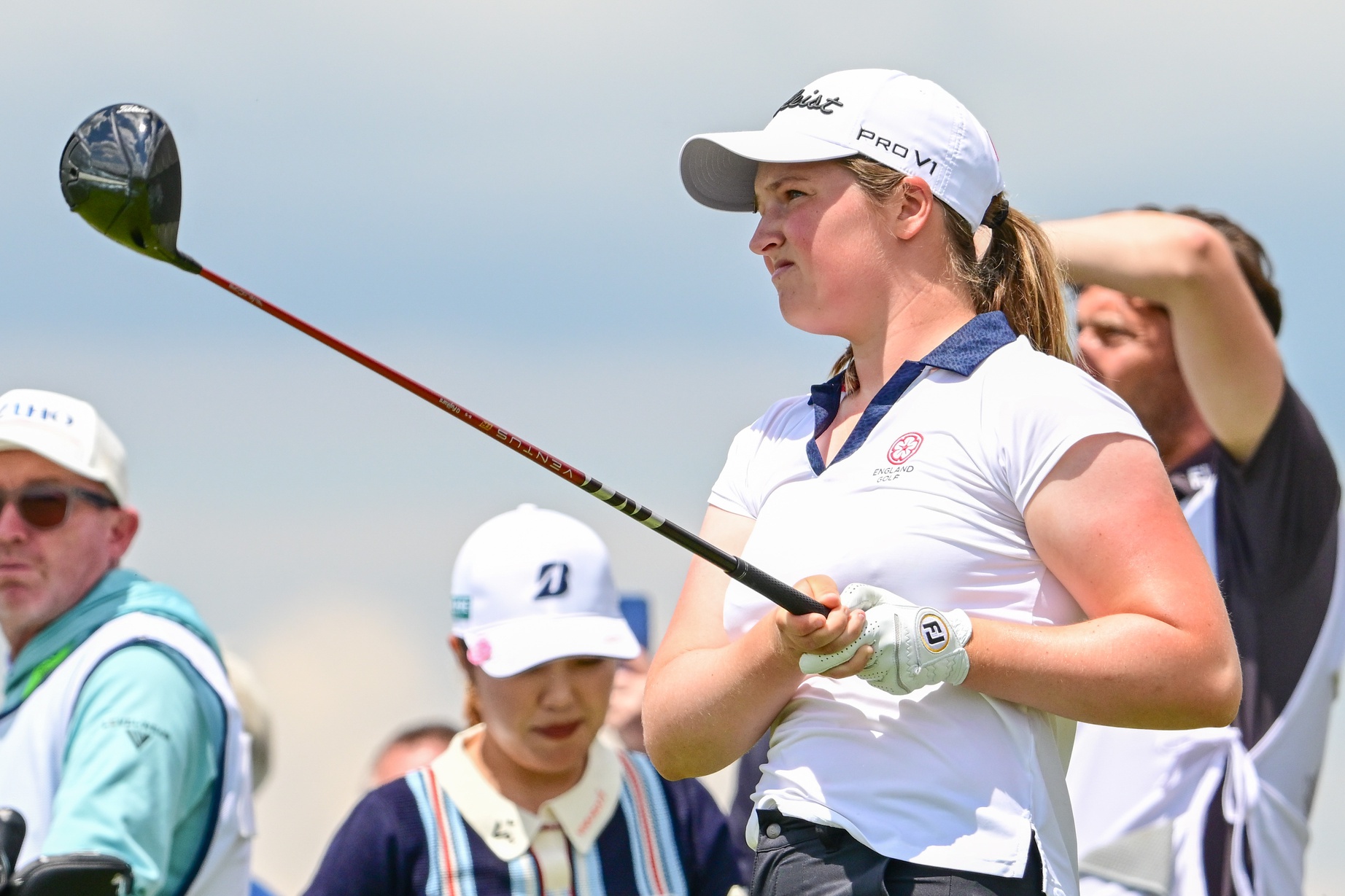
Most pros take months, even years, to win their first tournament. Lottie Woad needed exactly four days.
The 21-year-old from Surrey shot 21-under 267 at Dundonald Links to win the ISPS Handa Women’s Scottish Open by three shots — in her very first event as a professional. She’s only the third player in LPGA history to accomplish this feat, joining Rose Zhang (2023) and Beverly Hanson (1951).
But here’s what caught my attention as a coach: Woad didn’t win through miraculous putting or bombing 300-yard drives. She won through relentless precision and unshakeable composure. After watching her performance unfold, I’m convinced every golfer — from weekend warriors to scratch players — can steal pages from her playbook.
Precision Beats Power (And It’s Not Even Close)
Forget the driving contests. Woad proved that finding greens matters more than finding distance.
What Woad did:
• Hit it straight, hit it solid, give yourself chances
• Aimed for the fat parts of greens instead of chasing pins
• Let her putting do the talking after hitting safe targets
• As she said, “Everyone was chasing me today, and managed to maintain the lead and played really nicely down the stretch and hit a lot of good shots”
Why most golfers mess this up:
• They see a pin tucked behind a bunker and grab one more club to “go right at it”
• Distance becomes more important than accuracy
• They try to be heroic instead of smart
ACTION ITEM: For your next 10 rounds, aim for the center of every green regardless of pin position. Track your greens in regulation and watch your scores drop before your swing changes.
The Putter That Stayed Cool Under Fire
Woad started the final round two shots clear and immediately applied pressure with birdies at the 2nd and 3rd holes. When South Korea’s Hyo Joo Kim mounted a charge and reached 20-under with a birdie at the 14th, Woad didn’t panic.
How she responded to pressure:
• Fired back with consecutive birdies at the 13th and 14th
• Watched Kim stumble with back-to-back bogeys
• Capped it with her fifth birdie of the day at the par-5 18th
• Stayed patient when others pressed, pressed when others cracked
What amateurs do wrong:
• Get conservative when they should be aggressive
• Try to force magic when steady play would win
• Panic when someone else makes a move
ACTION ITEM: Practice your 3-6 foot putts for 15 minutes after every range session. Woad’s putting wasn’t spectacular—it was reliable. Make the putts you should make.
Course Management 101: Play Your Game, Not the Course’s Game
Woad admitted she couldn’t see many scoreboards during the final round, but it didn’t matter. She stuck to her game plan regardless of what others were doing.
Her mental approach:
• Focused on her process, not the competition
• Drew on past pressure situations (Augusta National Women’s Amateur win)
• As she said, “That was the biggest tournament I played in at the time and was kind of my big win. So definitely felt the pressure of it more there, and I felt like all those experiences helped me with this”
Her physical execution:
• 270-yard drives (nothing flashy)
• Methodical iron play
• Steady putting
• Everything effective, nothing spectacular
ACTION ITEM: Create a yardage book for your home course. Know your distances to every pin, every hazard, every landing area. Stick to your plan no matter what your playing partners are doing.
Mental Toughness Isn’t Born, It’s Built
The most impressive part of Woad’s win? She genuinely didn’t expect it: “I definitely wasn’t expecting to win my first event as a pro, but I knew I was playing well, and I was hoping to contend.”
Her winning mindset:
• Didn’t put winning pressure on herself
• Focused on playing well and contending
• Made winning a byproduct of a good process
• Built confidence through recent experiences:
- Won the Women’s Irish Open as an amateur
- Missed a playoff by one shot at the Evian Championship
- Each experience prepared her for the next
What this means for you:
• Stop trying to shoot career rounds every time you tee up
• Focus on executing your pre-shot routine
• Commit to every shot
• Stay present in the moment
ACTION ITEM: Before each round, set process goals instead of score goals. Example: “I will take three practice swings before every shot” or “I will pick a specific target for every shot.” Let your score be the result, not the focus.
The Real Lesson
Woad collected $300,000 for her first professional victory, but the real prize was proving that fundamentals still work at golf’s highest level. She didn’t reinvent the game — she simply executed the basics better than everyone else that week.
The fundamentals that won:
• Hit more fairways
• Find more greens
• Make the putts you should make
• Stay patient under pressure
That’s something every golfer can do, regardless of handicap. Lottie Woad just showed us it’s still the winning formula.
FINAL ACTION ITEM: Pick one of the four action items above and commit to it for the next month. Master one fundamental before moving to the next. That’s how champions are built.
PGA Professional Brendon Elliott is an award-winning coach and golf writer. You can check out his writing work and learn more about him by visiting BEAGOLFER.golf and OneMoreRollGolf.com. Also, check out “The Starter” on RG.org each Monday.
Editor’s note: Brendon shares his nearly 30 years of experience in the game with GolfWRX readers through his ongoing tip series. He looks forward to providing valuable insights and advice to help golfers improve their game. Stay tuned for more Tips!


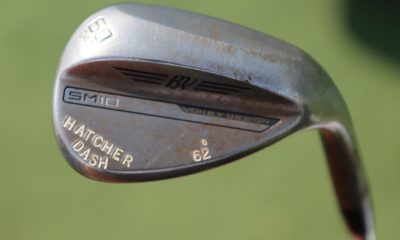

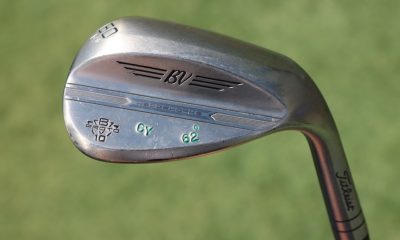

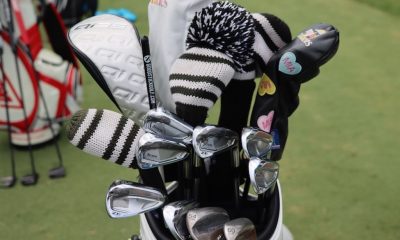

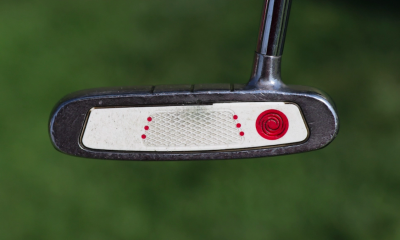

Ron J.
Jun 5, 2014 at 3:10 pm
Thanks for the great tip on encouraging an in-to-in swing path (moving the ball well forward). When I am trying to ingrain swinging down and through on my irons I have trouble maintaining the in-to-in path: I tend to swing out-to-in and sometimes I will shank. Do you have any suggestions or drills for maintaining the in-to-in path in this situation?
ENyst
Jun 3, 2014 at 8:14 am
Hi Dennis,
I’ve struggled for years with an in to out path, leaving the door open for the dreaded snap hook or push fade miss. A few lessons stressed swinging “left” which I really struggled with mentally. The ball position far forward seems to make great sense, are there any other tips for helping build a more natural in-to-in path? Thanks!!!!
Manu Martinez III
Jan 31, 2014 at 5:40 pm
Dennis, why did you say that the only time the target line and BPL are one in the same is when one is aimed perfectly parallel left of the target line? Where I align my body doesnt dictate where my actual swing plane will point at impact. I can set up perfectly parallel left of the target and have a swing plane the points left or right once impact occurs. Please advise. Great article just confused on that one detail.
Dennis Clark
Feb 11, 2014 at 9:06 pm
Just noticed this….yes I see your point. If I’m aimed parallel left but my HSP is left at impact, I have “shifted” my BPL to the left. My comment was more set up oriented.
Bailey Cottle
Jan 24, 2014 at 10:32 pm
Hi Dennis,
only just saw this article and i have been having a bad hooking problem even when weakening my grip which must mean a serious case of in to out swing path, just a question,should it feel like i pull my left shoulder into a slightly open position as i make my downswing? as this is what i feel costs me a lot of shots i still manage to shoot rounds in the 70s but i feel as though i should be mid-high 60s e.g 66-69.
thank you,
Bailey
Dennis Clark
Feb 11, 2014 at 9:11 pm
I might have you opening your upper body more from the top and a forward ball position.
Sam Soonthorn
Jan 9, 2014 at 8:31 am
Hi Dennis,
I played golf for about 35yrs+. Just got a chance to hit on Trackman for the first time with my driver. The results are..attack angle 2.6 degrees, Club path 7.5 degrees, Face angle 1.3 degrees and Face to path -6.2. My situation pretty much draw to hook.
Would you agree if I set myself to an open stance and aim a little left with ball forward, Will I overcome my hook shot?
Last but not least, Do you have any swing thought drill that I can use while I play to prevent me from hooking the ball?
Sam
Dennis Clark
Feb 11, 2014 at 9:15 pm
For a drill I might hit some drivers off the ground from a very forward ball position. As far as the path is concerned it appears the club is getting too far behind you either going back or coming down.
JAMES CONROY (JD)
Dec 15, 2013 at 9:22 am
Dennis, although I just finished reading your article, on swing path problems it was a “Eureka” event for me. Although, I have been a student of the game for over 60 years, I have never before encountered your innovative lesson on the profound effect that ball position has on swing path. I am a “blocker” (in-to-out) and only recently stumbled on the effect of ball position by trial and error. Reading your excellent article has reinforced and confirmed my suspicion. Thank you for your incite.
Dennis Clark
Dec 26, 2013 at 9:04 am
Thx Im glad it helped. Sorry for the delayed response.
Dennis Clark
Nov 20, 2013 at 8:04 pm
Thx everyone. Ball position is the oldest, easiest and still the best fix for swing path. Back for out to in and forward for in to out works WONDERS. I know because I see it every day. Another simple one is hills-moguls. Out to in can benefit from an uphill lie and in to out can be helped on a downhill slope. These hills work great for attack angle too. Good luck. Send me video anytime.
Eric
Jun 2, 2014 at 3:51 pm
MOV_1314.MOV
Jeremy
Nov 11, 2013 at 2:20 pm
Dennis…Great Article! I am a lefty and am having issues right now with inconsistent strikes. I feel like my hands are really flat halfway through my backswing and come way inside out. Would the forward drill correct that you think?
Ray Welsh
Nov 7, 2013 at 9:48 pm
Great article.
What drill would you recommend for a too steep/out to in path?
Ray Welsh
Nov 7, 2013 at 9:47 pm
Wonderful article.
Your drill for solving a very in to out, shallow path is great. What drill would you recommend for the opposite case ( out to in/ steep swinger?
Golfer X
Oct 29, 2013 at 7:59 pm
Like naflack, I am a sweeper, no divots whatsoever. I, also have short arms, but big biceps so I am strong enough to get a ball out there. My swing path is in to in, like a true arc, so for me ball position is of the utmost importance. My question is how do I position myself so that I pick the optimum ball position for my swing path during a round? Its easy at the range but during a round, is another story.
Dennis Clark
Oct 29, 2013 at 9:30 pm
“working” the ball requires a ball position change: back for a draw, forward for a fade. You’ll know if the ball is positioned correctly if your shots are not curving.
Dave M
Oct 14, 2013 at 11:23 pm
Hi Dennis, when performing the “ball forward” swing path drill do you recommend using a particular club or work through the bag? Try to finish posted up in balance or step through like Gary Player?
Pete
Oct 12, 2013 at 12:27 am
Dennis, I definitely get stuck on my downswing. On video, when I start my downswing, my hips turn so fast that my rms get stuck behind me. Maybe you are saying the same thing but I thought I should drop my arms down first trying to keep my shoulders closed longer and not rotate the hips too early with my arms lagging behind. Would it also be good for me to play the ball forward in my trance?
Dennis Clark
Oct 12, 2013 at 8:17 pm
Its different for everybody, of course. If I have taught you, or you’ve heard me say “get your arms down early and keep your shoulders closed longer, it is because someone is over the top. Not stuck or under. Quite the opposite really
Stan
Oct 11, 2013 at 2:57 pm
Dennis, I have problems hitting a lot of pulls and some pull hooks, and when I do hit it well, it’s often a slight pull and very high ball flight.
I take it from your piece that a good drill for me would be practicing with the ball well back in my stance?
Dennis Clark
Oct 11, 2013 at 4:29 pm
Yes from your ball flight description. Also check your lie angle(s) (too upright) and shaft flex (too soft). good luck
BA
Oct 15, 2013 at 2:43 pm
Dennis,
Like Stan, I get a case of the pulls. Through experimentation and lots of balls, I am pretty sure I open both the lower body and the shoulders far to quickly from the top. Of course, I can feel and see myself coming from out to in and hitting the outside of the ball. My cure, which has worked wonderfully has been to do no conscious turning of the hips or shoulders and simply swing the club back on the path I used on the backswing to hit the inside of the ball. It feels as if I am using no hips and hitting the ball with my back towards the target. Obviously this is not the case, but I have significantly slowed down my hips and shoulders. The momentum of the swinging club and arms pulls the body around to the finish. In my sense, the body has become totally responsive. Does this make sense?
craig@tourimpactgolf.com
Oct 9, 2013 at 11:20 am
Great Article. Actually used a ball position outside my left foot with the driver for a very long time to cure a nasty in-to-out hooking problem.
Dennis Clark
Oct 10, 2013 at 7:21 pm
It’s a great drill particularly for the better player.
Marcus
Oct 9, 2013 at 7:09 am
Hi Mr. Clark,
Thank you for a great article, I have a question since i’m a heavy in-to-out swinger.
1.: I have been struggling with early release, as to compensate I have a slightly too forward motion in my upper body, similar to the one Hunter Mahan haves, which previously could result in shanking quite a bit. How do I use your drill and place the ball more forward in the stance and still ensure my upper body and head is not moving too much down the line during the downswing ?
Thx
Marcus (hcp: 0)
Dennis Clark
Oct 10, 2013 at 7:19 pm
In to out and early is a not a compatible combination. You’re right that moving ahead of the ball is often a function of releasing too early, particularly from the inside. What might be best for you is to try and play from an open position. You will have to get away from playing the inside. It is very difficult to change a release point, much easier to change a path…
phil graeber
Oct 8, 2013 at 9:45 pm
My experience has been that the more focus you put on the club head actually hitting the ball means more success in the result. The next time you’re at the range, try remembering the divot after you’ve made the swing. The difficulty in seeing or remembering the divot instead of the shot it self is the key. When you can do this the tempo is right for you. Almost always and in every stroke-including putting.
My 2 cents/
tmk
Oct 8, 2013 at 11:04 am
Very interesting article. Thanks. I’ve always had an in to out path, but this year I’ve been working on a steeper shoulder plane both on the backswing and downswing. It has caused my path to be closer to in to in, though I do sometimes get a bit too far out coming in to the ball. Just curious, do you find that a steeper shoulder plane is generally helpful in getting someone to an in to in plane?
Dennis Clark
Oct 10, 2013 at 7:27 pm
well in to it is not a plane, it’s a direction, but in answer to your question: a steeper shoulder turn CAN help, but does not guarantee it. I see steep shoulders, and flat arms and club sometimes too. I am always leery of steep shoulders because I see it cause a poor weight distribution (reverse pivot.
invisaman
Oct 7, 2013 at 12:38 pm
This is article is just wanted I needed. You confirmed that the problems I have are all related.
A few months ago my swing had many pushes and push fades. I started turning my lower body more and the ball started more left but ended up right. Then I made my grip slightly stronger I got pull and pull hooks. I went back to the neutral grip and turned my lower body (hips) faster and most of the time I will get snap hooks or a push.
A fellow golfer told me I need to roll my hands more but the timing of the roll is difficult and my results were bad. So, recently I tried turning my upper body (shoulders) more in the downswing. Since the shoulders move the arms and the arms move the hands I starting to get better results. I am still working this part and I know it takes time.
Now the other part is loft. Based on the launch monitor readings I am swing down but still adding loft in my full swing!? Most of the time with irons I have shallow or no divot with irons. I think this is a weight shift or lateral movement issue. I thinking I am not leaning forward (left) enough at impact. I will try your “hit drivers off the ground from a forward ball position” drill.
I know this was bit long winded but read this article right after I came back from the range and it touched my “pain”.
Thanks!
Dennis Clark
Oct 7, 2013 at 5:00 pm
IM glad it helped. The adding loft sounds like an early release…
invisaman
Oct 18, 2013 at 12:06 pm
I have been working on the weight shift on the downswing doing just dry swings. The other day I went to range and I am compressing the ball. It seems to pop of the face with my irons. I hit some good shots but some bad one just the same. I have to get use to it. Thank you for writing this article!
Mike
Oct 6, 2013 at 5:07 pm
I have had a lot of success this year with a focus on my swing plane. I do every now and then hit my absolutely couple of terrible shots per round. These shots usually go of to the right with a slice spin and don’t ge to far. If I could eliminate those I would be in pretty go shape.
Dennis Clark
Oct 7, 2013 at 5:01 pm
Sounds like out-to-in with a severe open face.
naflack
Oct 6, 2013 at 1:37 pm
i have always been an in to out sweeper and any attempt to deviate not only negatively impacts my scorecard it also negatively impacts my body.
1) is it fair to say that our body type determines what swing type and path we use?
2) should i be gripping the club more neutral or strong with my swing type?
thanks
Dennis Clark
Oct 7, 2013 at 8:24 am
I can’t see how body type would play a role in path per se. And making a grip change suggestion without seeing your ball flight is difficult. But in-to-out needs a closed face so, depending on your hand action, just go by ball flight